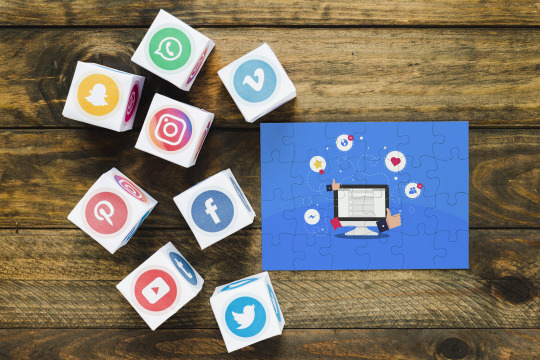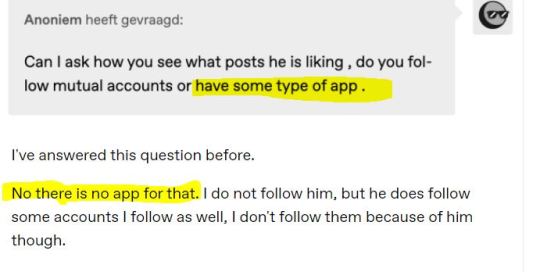#Media Monitoring Tools Market
Explore tagged Tumblr posts
Text
The Media Monitoring Tools Market is a subset of the broader technology business that provides tools and solutions for monitoring and evaluating media information across many channels. Newspapers, magazines, television, and radio are examples of conventional media.
0 notes
Text
#Media Monitoring Tools Market#Media Monitoring Tools#IT#digital media#information technology#media#media monitoring
1 note
·
View note
Text
Social Listening for Reputable Online Presence
Discover the power of social listening to enhance your online presence and drive business growth. Read on to learn expert tips and strategies. [Continue reading] What is Social Listening?Importance of Social ListeningStrategies for Effective Social ListeningDefine your goalsChoose the right toolsMonitor relevant conversationAnalyze the dataEngage with your audienceExpert Tip on Social Listening…

View On WordPress
#customer feedback#social media marketing#social listening#online presence#reputation management#brand monitoring#social media monitoring#digital marketing#social media strategy#online reputation#social media listening#brand reputation#social insights#social media analytics#brand awareness#customer engagement#social media tools#social media tips#social media trends#online reputation management#brand management#social listening tools#audience insights#customer experience#brand loyalty#social media success#social media growth#brand perception#digital reputation#subhamdas
0 notes
Text
Social Media Marketing is a way of promoting your product and service on social media platforms. It is a form of digital marketing that leverages the power of popular social media networks to achieve your marketing and branding goals. Explore our video to learn more about social media marketing and how Rannkly helps you achieve your social media goals.
#social media#social media marketing#social media management#social media tools#rannkly#marketing#social media monitoring#social media optimization#technology#software#business
0 notes
Text
Buffer vs Later 2023: Choosing the Right Social Media Management Tool
socialjobnow.com has published a comparison between Buffer and Later, two popular social media management tools used by businesses to schedule and automate their social media posts. The article provides an in-depth analysis of each tool's features, pricing, and benefits, offering valuable insights for businesses looking to optimize their social media strategy.
The article begins by introducing Buffer and Later and highlighting their respective strengths and weaknesses. Buffer is praised for its user-friendly interface, robust scheduling options, and analytics, while Later is noted for its visual planning features, Instagram-specific tools, and ease of use.
Also delves into each tool's features, comparing them in terms of post-scheduling, content curation, analytics, and social media platform compatibility. Both tools offer a range of features, but Buffer's advanced scheduling options and analytics make it a better fit for businesses with complex social media management needs. Later, on the other hand, maybe a better choice for businesses focused on visual content and Instagram marketing.
In terms of pricing, Buffer offers a tiered pricing system based on the number of users and social media accounts, while Later offers a free plan with limited features and paid plans with more advanced functionality. Businesses should consider their specific needs and budget when choosing between the two tools.
The article concludes by emphasizing the importance of selecting a social media management tool that aligns with a business's goals and requirements. The comparison provides valuable insights into the differences between Buffer and Later, assisting businesses in making an informed decision about which tool best suits their social media management needs.
Check out the article below
#digitalmarketing#growth#social marketing#social media#social media growth#social media listening#social media management#social media marketing#social media monitoring#social media tips#management tools#social media marketing agency#online marketing
0 notes
Text
Why Your Business Needs a Social Inbox Strategy
In today's digital age, businesses are increasingly turning to online platforms to connect with customers, build brand awareness, and drive sales. Social media has become a key component of this strategy, with platforms like Facebook, Twitter, and Instagram providing powerful tools for reaching and engaging with customers.

But simply having a presence on social media is not enough. To truly succeed on these platforms, businesses must have a well-defined social inbox strategy in place. In this blog post, we'll explore why a social inbox strategy is so important, and how businesses can develop and implement one for maximum impact.
What is a Social Inbox?
Before we dive into the importance of a social inbox strategy, it's important to understand what we mean by the term "social inbox." Essentially, a social inbox is a single, centralized location where businesses can manage and respond to all of the messages, comments, and mentions they receive on social media platforms.
This inbox might be located within a social media management tool, or it might be integrated into a broader customer relationship management (CRM) system. The key is that all of the company's social media activity is funneled into a single location where it can be easily tracked, analyzed, and acted upon.
Why Your Business Needs a Social Inbox Strategy
So why is having a social inbox strategy so important? Here are just a few of the key benefits:
1. Greater Efficiency
By consolidating all of your social media activity in one place, a social inbox makes it much easier to manage and respond to customer inquiries, comments, and complaints. Instead of bouncing back and forth between multiple platforms, you can simply log into your social inbox and see everything in one place.

This can save a significant amount of time and effort, allowing you to respond more quickly and effectively to customer needs.
2. Improved Responsiveness
Speaking of responsiveness, a social inbox also makes it much easier to keep on top of customer messages and comments in real-time. Instead of waiting for notifications from multiple platforms, you can set up alerts within your social inbox that notify you the moment a customer reaches out.
This allows you to respond promptly to customer needs, addressing any concerns or issues before they escalate.
3. Better Data Analysis
A social inbox can also provide valuable insights into customer behavior and preferences. By analyzing the messages, comments, and mentions you receive, you can gain a deeper understanding of what customers are looking for and how they feel about your brand.
This information can then be used to improve your social media strategy, create more effective content, and tailor your messaging to better meet customer needs.
4. Enhanced Brand Reputation
Finally, a well-executed social inbox strategy can help boost your brand reputation and build customer loyalty. By responding promptly and effectively to customer inquiries and complaints, you show that you care about your customers and are willing to take the time to address their concerns.
This can help establish trust with your audience and encourage them to keep coming back to your brand in the future.

Developing a Social Inbox Strategy
So how do you go about developing a social inbox strategy that works for your business? Here are a few key steps:
1. Choose the right tools
The first step is to choose the right tools for your social inbox. There are a number of social media management and CRM platforms available, each with its own strengths and weaknesses.
Do your research to find the tools that best fit your needs and budget, and make sure they integrate smoothly with your existing social media accounts.
2. Assign roles and responsibilities
Next, it's important to assign roles and responsibilities for managing your social inbox. Depending on the size of your team and the volume of social media activity you receive, you may need to designate specific individuals to handle monitoring and responding to messages.
Make sure everyone knows what their role is, and establish clear guidelines and protocols for how messages should be handled.
3. Set up alerts and notifications
To ensure you stay on top of incoming messages and comments, set up alerts and notifications within your social inbox. This could include email alerts, push notifications, or in-app alerts, depending on the tools you are using.
Make sure these alerts are customized to your preferences and provide enough information to make it easy to respond quickly.
4. Analyze and adjust
Finally, it's important to continually analyze and adjust your social inbox strategy based on the data you collect. Use analytics tools to track message volume, response times, and customer sentiment, and adjust your approach as needed to improve performance.
By taking a data-driven approach to your social inbox strategy, you can optimize your results and ensure maximum impact.
Final Thoughts
In today's digital landscape, a well-executed social media strategy can make all the difference in the success of your business. And by developing a solid social inbox strategy, you can ensure that you are able to manage and respond to customer inquiries and comments with speed and efficiency, while also building stronger relationships and improving your brand reputation. So if you haven't already, now is the time to start thinking seriously about your social inbox strategy and how you can take your social media game to the next level.
#free social media monitoring#social listening in marketing#social media listening#social mention free tool#marketing social listening#social listening dashboard
0 notes
Text
QuickMetrix is a powerful digital customer engagement management platform that offers a range of tools to help businesses manage their online reputation. These tools include social listening, online reputation management, social CRM, social publishing, surveys, and crisis management. QuickMetrix provides businesses with real-time insights into customer sentiment and helps them stay ahead of the competition.
#social media listening tool#competitor analysis#brand management#social media monitoring#digital marketing.#social media analytics#sentiment analysis#customer insights#crisis management#social media engagement
0 notes
Text
Social media management platform includes tools for marketing, and it is a cohesive way of allowing businesses to reach customers. The management tools help social media specialists and social media managers to work efficiently.
Top 15 Social Media Monitoring Tools for Businesses in 2023
1. HootSuite
Hoot suite is appropriate for freelancers, small teams and businesses, and agencies. It is a management tool for marketers in social media. The interface is easy-to-use, and it features advanced tiers. It manages to publish on social media management platforms using one dashboard.
2. Brandwatch Consumer Intelligence
Brandwatch is a social media monitoring and management platform. The tools facilitate social listening. Use to identify hashtags and popular topics. Brandwatch offers flexibility to reach a global audience. Prioritize engagement and identify influencers interacting with interesting topics.
3. Sprout Social
Sprout Social is prominent for its social listening tool and powerful analytics dashboard. It offers a galore of integrations. It has advanced features even at the basic level including location and keyword monitoring, CRM tools, and review management.
4. NapoleonCat
NapoleonCat gives at affordable prices the basics. Its higher levels offer advanced offerings such as moderation of ads, automatic translation, and moderation and retention of 24-month data. Assign posts or make internal posts. The pricing varies with user numbers and profiles.
5. Sendible
Sendible is a social media management full-service tool useful for collaboration, publishing, listening, and analytics. Sensible features image resizing, allowing you to customize posts in one publish action. Sendible supports Instagram, Facebook, LinkedIn, Twitter, GoogleMYBusiness, and Pinterest.
6. AgoraPulse
AgoraPulse is an affordable tool giving marketers to optimize social media monitoring, publishing, and reporting. It supports marketing campaign ROI, and integrations over social media platforms and offers flexible pricing. It boasts the best customer support and ease of use.
7. Buffer
Buffer is a popular management tool in social media. It is an affordable management option with no-frills tools. The ability to add social channels here allows scaling without jumping tiers for the users. It allows for building mobile-friendly, customized landing pages for social campaigns.
8. HubSpot
The HubSpot website offers an inbound comprehensive marketing campaign ROI program to integrate with email marketing and the website. The tools facilitate consolidating mentions, centralizing publishing and attributing to social media the business value.
9. Zoho Social
The Zoho Social website is a well-known social media management tool. It offers an affordable and flexible option to integrate with CRM. It is a well-rounded management tool in social media, offering monitoring, scheduling, and reporting.
10. Sprinklr
Sprinklr is suitable for enterprise and agency clients supporting Social Media Monitoring. It has workflows to manage large teams with 30+ channels. Sprinklr features APIs, and deep customer needs requiring organizations on social media to integrate with their XRM and CX systems.
11. Falcon.io
Falcon.io is popular and features engagement team-friendly aspects such as content storage and approval workflows. It includes integrated competitive benchmarking with an audience data dashboard. It offers social listening, calendar management, publishing, engagement measurement, and ads management.
12. Keyhole
Keyhole offers a visual analysis of high-level. It is the only platform offering the analytics and integration of TikTok. Keyhole uses AI and optimizes posting times, and brand reputation, measures sentiment, offers virality predictions and predicts up to 30 days of outperformance.
13. Digimind
Digimind offers content to make sense of online data and transform it into business actionable insights. It includes impressive tools and features to see conversations of your brand, across online sources and in real-time.
14. SocialPilot
SocialPilot goes beyond analytics and scheduling. It has functions and integrations with Dropbox, Box.com, and Canva. Its content curation tool runs topics unlimited, and shares trending content and a browser extension is the bonus feature.
15. eClincher
The eClincher website offers brand reputation management, analytics, and a range of integrations supporting LinkedIn, Twitter, Instagram, Facebook, YouTube, etc, with other cloud tools. For a small fee, add social profiles and extra users.
#social media#businesses#marketing#social media monitoring#branding#social media management#digital marketing#social listening#management tools#crm#marketing campaign
0 notes
Text
🔎Scam Exam(ination)🔍
Seen as: Click here! / Read more... Scam type(s): Phishing / Malicious website
Good day everyone, today I'd like to talk about a scam that is some what pretty obvious to spot on tumblr. Unless you're someone who straight up lets curiosity get the best of them and you go clicking links on sketchy looking blogs without thinking. (Don't do that.) You'll probably be able to avoid it.
Now, for safety reasons I'm not going to be linking the blog in question that is running this scam because I'm not going to 'tempt fate' for the sake of documentation. But I will be showing you through the help of a couple useful websites, what's going on behind the scenes.
-----
The first thing I noticed (other than the blog only being a few days old) when I saw this persons posts was, well, what I consider to be one of the most biggest and immediate red flags that was on every single post of theirs.

If you know anything at all about internet history and internet safety, one of the most common and well known ways that malicious actors try to get you to go to their scam/phishing website is with the temptation of a big reward if you do x to y.
'You've won a free $100 gift card! Click here to claim!'
'Hot local singles in your area! Click here now to find them!'

Memes aside, it should go without saying that you should not, under any circumstances, click links that look like this that you receive via email, text, or that you see in advertisements. Not only could these links lead you to a phishing page (wiki) that mimics tumblr or another social media platform in an attempt to get you to log in. Doing so would result in your account being compromised and your login information being stolen.
Tempting links like these could also lead to a web page like the one that this one in particular I'm about to show you, too.
With the help of Cloudflare via their url scanner tool I was able to examine this website, see where it redirects people to, view the HTML (for you nerdy folks) and in turn see the landing page it takes you to when you click it. Without clicking it myself.
Want to know what this takes you to?

A page leading to a fake popup with a link to install a virus.
Now, let me be 100% clear: These viruses are bad.
From what I know of them, not only do they hijack and steal all of your login information on the device you installed it on, 9/10 it will also install a keylogger onto your system. What this does is: even if you uninstall the virus and your system seems clean, these bad actors will still be able to monitor your device and steal your information unless you factory reset your device or PC.
Here's information on keyloggers. (malwarebytes)
If these bad actors really, really wanted to ruin someones day, by installing these 'free apps' it could also put what is known as Ransomware on your device. A trojan that locks down your device, encrypts your files, and demands you pay a ransom for it to be unlocked. All of which is under a timer or it will completely brick your system.
Here's a video by IBM that explains how ransomware works.
Another very, VERY useful website I'd like to share that I became familiar with through some channels on youtube that talk about scams is VirusTotal. https://www.virustotal.com (despite its name, it's not a virus!)
This website has two key features I think are awesome: 1- You can scan a url for viruses/malicious activity to see if it's been flagged by one of the many antivirus vendors on the market. and 2- You can upload files you downloaded to see if they are infected by trojans or malware before you even open them.

CloudFlare and VirusTotal are 100% free to use websites with no sign up or cost. (No this isn't an ad and no I am not sponsored. These are just resources and I am giving them to you lol)
-----
Final thoughts: I know curiosity may get the best of us at times, but don't let that become your downfall. If you see blogs that are only a few days old exhibiting this behavior, please make sure you report them on your own time and don't encourage mass reporting by making posts about them.
Remember: Stop and think before you click that link. :)
Other helpful guides on spotting scams. (by @kyra45)
63 notes
·
View notes
Text
"Britain’s largest gathering of counter-terrorism experts assembled in London last month to discuss what one police chief called 'legal but harmful protest' following Israel’s war on Gaza. Inside a cavernous Docklands conference hall, companies at the Counter Terror Expo displayed gas mask-clad dummies and crowd control systems as enthusiastic AI reps promised revolutionary advances in surveillance. Tools for hacking phones with 'brute force,' monitoring someone’s emotional state based on their social media and rapidly digesting the contents of an 'acquired' computer were all up for sale. Among the potential customers were foreign police departments, including officers fresh from Georgia’s violent crackdown on anti-Russia protests.
Several salespeople declined to explain their products to the media. 'I can’t believe they let you people in here,' one rep told Declassified after seeing our press card. 'I think it’s disgusting.' Her company markets AI tools for military and law enforcement to process recordings of people’s voices.
When delegates weren’t browsing spyware or sipping craft beer with a £12 'world food' meal deal, they could listen to the security industry’s leading lights. These included detective chief superintendent Maria Lovegrove who runs Britain’s Prevent strategy against radicalisation. She trumpeted 53 arrests for terrorism offences since October 7. Only one of these was for violence. The rest concerned social media posts or attending gatherings. Asked whether this data suggests police are overreacting to peaceful pro-Palestine protests, Lovegrove valorised an 'early intervention' approach. She told Declassified this was the 'greatest tool in preventing terror attacks' and insisted officers 'only arrest and prosecute when we have to.' Among those arrests were three women found guilty for wearing paraglider stickers at a protest.
Dom Murphy – the Met’s counter terrorism commander – told delegates he was monitoring 'legal but harmful' protests and the risk of 'low-sophistication' attacks by people radicalised online or at university since October 7th. 'If there are 100,000 people at a protest, and one person holding a Hamas flag, we will find them and arrest them,' Murphy reassured attendees. A majority of recent arrests targeted individuals aged under 17, he boasted, as proof that the 'early intervention' approach was working.
Another panellist praised Britain’s ability to pre-emptively arrest people for public order offences at demonstrations and target them for terror offences further down the line. Craig McCann, a former senior Prevent officer, expressed the mood in the room when he described ceasefire marches as a 'permissive environment for the transfer of extremist ideology.' Like other speakers, he sought to delegitimise opponents of Israel’s war on Gaza by characterising pro-Palestine protests as an 'Islamist camp conflating with far-Right anti-Semitism.' McCann explicitly linked Palestinian nationalism with Nazism, an Israeli propaganda point. Fellow panellists claimed parts of London were a 'no-go zone for Jews.' Discussing threats from 'street protest all the way through to terrorism,' the conference presented far Left, far Right, 'Islamist' and 'environmentalist' ideologies as equal, inter-related threats to British society. ... After lunch, discussion turned to 'British values' and protecting England from the menace of social media and foreign flags that vexed thousands of officers under Murphy’s command. Many felt the next-generation tech on display would ensure ever more effective crackdowns on street protest and dissent."
32 notes
·
View notes
Text
New Business Marketing Tips And Tricks for Success
Starting a new business can be an exciting endeavor, but it also comes with its fair share of challenges, especially in the competitive landscape of today's market. Effective marketing is crucial for the success of any new venture. Here are four essential marketing tips and tricks to help your new business thrive.
Define Your Target Audience: Before diving into marketing efforts, it's essential to identify and understand your target audience. Define your ideal customer persona by considering demographics, interests, pain points, and buying behaviors. Conduct market research to gather valuable insights that will guide your marketing strategies. Tailoring your messages and campaigns to resonate with your target audience will significantly increase your chances of success.
Once you have a clear picture of your audience, choose the most suitable marketing channels to reach them effectively. Social media, email marketing, content marketing, and pay-per-click advertising are just a few options to consider. Your choice of channels should align with where your audience spends their time online.

Create Compelling Content: Content marketing is a powerful tool for new businesses to establish their brand and build credibility. Develop high-quality, informative, and engaging content that addresses the needs and interests of your target audience. This content can take various forms, including blog posts, videos, infographics, and podcasts.
Consistency is key when it comes to content creation. Develop a content calendar to plan and schedule regular updates. Providing valuable content not only helps you connect with your audience but also boosts your search engine rankings, making it easier for potential customers to find you.

Leverage Social Media: Social media platforms have become indispensable for marketing in today's digital age. Create profiles on relevant social media platforms and engage with your audience regularly. Share your content, interact with followers, and participate in industry-related discussions.
Paid advertising on social media can also be a cost-effective way to reach a broader audience. Platforms like Facebook, Instagram, and LinkedIn offer targeting options that allow you to reach users who match your ideal customer profile.

Monitor and Adapt: Marketing is an ever-evolving field, and what works today may not work tomorrow. To stay ahead of the curve, regularly monitor the performance of your marketing efforts. Analyze key metrics such as website traffic, conversion rates, and return on investment (ROI). Use tools like Google Analytics and social media insights to gather data and insights.
Based on your findings, be prepared to adapt your strategies and tactics. If a particular marketing channel isn't delivering the expected results, reallocate your resources to more promising avenues. Stay up-to-date with industry trends and keep an eye on your competitors to ensure your marketing efforts remain relevant and competitive.
In conclusion, effective marketing is essential for the success of any new business. By defining your target audience, creating compelling content, leveraging social media, and continuously monitoring and adapting your strategies, you can position your new business for growth and long-term success in a competitive market. Remember that success may not come overnight, but with persistence and the right marketing approach, your new business can thrive.

#business#digitalbusiness#digitalmarketing#seo#market analysis#data analytics#marketing#management#sales#learn digital marketing#Digital marketing course#seo expert#business success#businessgrowth
88 notes
·
View notes
Text
On March 11, Syrian farmer Ali Ahmad Barakat was driving a tractor to his fields in the fertile rebel-held lands of the Al-Ghab plain, just a few miles away from the front line with Assadist forces. For years, Al-Ghab’s farmers had refused to let the violence scare them away from working their fields.
But Barakat was about to become the next victim of a terrifying new Syrian Army-piloted weapon: a dirt-cheap, kit-built suicide drone.
Attacking civilians with drones isn’t new, but until recently, the vast majority of these attacks were carried out by more expensive long- and medium-range drones specifically designed for military purposes—characteristics that limited them to a small number of actors worldwide.
Armed groups such as the Islamic State began to experiment with small, cheap, off-the-shelf and custom-built drones in the 2010s, taking advantage of the consumer drone boom, but their attacks were largely focused on military targets and objectives.
Now, the picture has changed.
Small, inexpensive drones have become an indispensable tool on modern battlefields, as combatants come up with ever more creative ways to use these tiny flying robots. Inspired by these tactics, some fighters in conflicts from Myanmar to Syria are starting to use drone warfare techniques recently refined in the Russo-Ukrainian War, such as the use of tiny and ultra-fast suicide drones crafted from cheap hobby racing kits, as well as consumer camera drones rigged to drop explosives, to target, kill, and terrorize civilians.
And we don’t know how to stop them.
Since Russia first invaded Ukraine in early 2022, I’ve been monitoring the crucial role of small drone technology in the conflict, motivated by the hope that better understanding drone warfare tactics might make it easier to protect civilians from their dangers.
This March, the Syrian White Helmets civil defense group contacted me. According to their information (which has been published in a recent report), more and more civilians in the rebel-held front-line areas were getting attacked with small suicide drones. According to a number of sources, Russian military specialists had recently begun training Syrian Army forces to use both first-person-view (FPV) suicide drones and anti-drone guns. Russia’s drone warfare techniques were beginning to spread.
The attacks have shocked even hardened medics. One White Helmets volunteer, Ali Obied, was in the first group of medical workers to arrive on the scene after Barakat was killed. “When we reached the site, we saw how the suicide drone attacked the driver directly—it killed him and slaughtered him into pieces. We collected the pieces of the driver one by one,” he said. They were forced to withdraw quickly from the scene when, over a walkie-talkie, a spotter informed them that other drones were hovering nearby.
Another volunteer, Walid Abdeen, responded to an attack on April 16 that hit multiple civilian cars and a public market, injuring five people. He was confident that a suicide drone was the culprit, an observation backed up by other witnesses who saw the drone in the air before impact. “When suicide drones explode, nothing remains from it, just small pieces—but the sound of the drone is the same as those drones used by journalists,” Abdeen said.
The volunteers agreed that this similarity to peaceful drones was a problem. “It’s difficult for civilians to differentiate between them in the sky, and all of a sudden, they attack someone—a house, a center, or a car,” said Ismail Alabdullah, a media coordinator and volunteer for the White Helmets.
“Those drones, if they want to kill someone who is walking to his school, or even the White Helmets, if they’re returning to their [medical] centers—the drones can find individuals, attack the centers, kill directly,” Alabdullah added. “We have experience with mortars, rockets, and artillery shelling attacks. But this new weapon is incredibly dangerous because it is so precise and cheap to develop.”
White Helmets representatives say dozens of these FPV drone attacks are happening each week. Thanks to the terror spread by these relentless attacks, civilians who have hung on in Syria’s border regions for years are finally beginning to leave.
These drone-powered mechanisms for spreading mass civilian terror aren’t restricted to Syria: They are also on the rise in Ukraine. Targeted attacks by Russian drones on Ukrainian civilians rose dramatically this summer. And while top U.N. officials condemned this uptick in attacks to the Security Council in March, the onslaught shows no signs of stopping.
From July 1 to 21 alone, I collected 34 separate cases of alleged attacks on Ukrainian civilians by Russian drones, drawing from open-source information posted by official sources in the Ukrainian government. As in Syria, most attacks in Ukraine seem to be taking place near the front lines, where relatively short-range FPV racing and consumer drones can reach, and with the same goal of spreading terror.
On July 2nd, a Ukrainian woman was reportedly injured by an FPV drone while she stood in her backyard in Berislava. Days later, on July 11th, authorities reported that two female volunteers were injured after a Russian FPV drone hit a humanitarian aid delivery point in Stanislav. Then, on July 18th, Kherson Oblast’s governor reported that a 74-year-old man in Oleksandrivka was killed by a Russian drone attack – one of a number of older civilian victims.
Some attacks have hit moving civilian vehicles, including minibuses and personal cars—and a number of clearly marked humanitarian and medical vehicles. On Jan. 26, Ukrainian media reported that a Russian FPV drone had attacked a marked car belonging to an aid worker working with a NGO connected to the U.N. Refugee Agency’s humanitarian mission, destroying the car. A journalist who was riding in the vehicle said that it was “very likely that the operator could see the labels on the car.”
Later, on May 29, a Russian drone attack killed a Ukrainian ambulance driver and seriously injured his wife (who had been riding in the vehicle). Soon after, on June 8, Oleksandr Prokudin, the governor of Kherson oblast, reported that after a spate of shelling in the vicinity of Bilozerka, a Russian drone had attacked an ambulance that arrived on the scene to help, injuring the driver.
The tactic has spread beyond Ukraine and Syria. In Gaza, Euro-Med Human Rights Monitor reports that Israel has increasingly turned to small quadcopters to attack civilians and journalists, while Palestinian sources in Rafah told AFP in June that they lived in fear of “quadcopter drones, which mercilessly target anyone walking.” Israel has long used consumer-type quadcopters and racing drones for military purposes, including to drop tear gas on protesters in Gaza in 2018 and to counter so-called fire balloons sent from Gaza during the same period.
In Myanmar, rebel groups fighting the military junta have become adept at using small, cheap consumer and custom-built drones for both intelligence-gathering and for attacks. In recent months, Myanmar’s junta has begun to catch up: In September and October 2023, villagers in the Sagaing region said they were repeatedly attacked by bomb-dropping regime drones.
In another incident this July, the Insecurity Insight NGO reported that armed Myanmar military drones attacked a health center in the Sagaing region, killing a midwife, her two-year-old child, and at least five patients affiliated with the local resistance forces, as well as injuring at least 15. The patients who were killed reportedly had been injured in an earlier military drone attack, and had been seeking care for their injuries at the time
Mexico’s drug cartels, too, have become frequent users of consumer and DIY drones in recent years, both for smuggling and for terrorism. Like Bashar al-Assad’s forces, the cartels appear to view these sudden, shocking drone attacks as an effective way to terrorize civilians into ceding strategically valuable territory. In May 2023, more than 600 people were reportedly displaced from communities in Mexico’s Guerrero state due to cartel drone attacks, and attacks since then in the state have reportedly killed civilians and targeted local schools.
These tactics are spreading, and there is little guidance for civilians, including journalists and aid workers, on how to deal with them. Most existing writing on the subject is geared toward attacks from larger, more powerful, and stealthier long-range military drones.
Thankfully, there are some things the international community can start doing today.
National and international bodies and organizations concerned with civilian protection, such as the United Nations and the International Committee of the Red Cross, should come together to strategize around how best to protect people from small drone attacks. These groups should loudly condemn the terrorist attacks and investigate possible violations of international humanitarian law—as well as sponsoring the research and reporting needed to better understand the problem.
Russia’s war in Ukraine has led to the rapid development of new technologies for detecting drone radio signals in the air, new tools for electronically disabling drones, and a wide variety of other basic drone defense tactics (including the revelation that you can hide from thermal sensors by throwing a yoga mat over your head). Perhaps some of these tools and tactics could be adopted for civilian use.
Finally, we need more collective clarity around the legality of attacks on civilians with small drones under international humanitarian law as well as the legality of civilian efforts to defend themselves. Currently, interpretation of the law doesn’t adequately account for tiny flying robots in combat. As I wrote with my colleague Ossama A. Zaqqout in 2018 (and again in 2022), the presence of identical-looking small drones in the airspace over today’s conflicts makes it very hard for people on the ground to tell whose drone is whose.
Under international humanitarian law’s principle of distinction, combatants must distinguish themselves from civilians—but unlike manned aircraft, drones are too small to carry marks visible from the ground, and they can’t respond to radio checks. We need better solutions to avoid these cases of mistaken identity.
There’s also uncertainty around how humanitarian law might apply to civilian efforts to anticipate—and defend themselves against—drone attacks. Will civilians lose their noncombatant status if they use counterterrorism tools against small drones? Do civilians lose protection if they monitor radio waves for armed drone presence and report that information to combatants—or if they post that information online in a public place?
As is the case with so many other novel consumer technologies, we’ve swiftly figured out how to use drones both to help humanity and to hurt it. But civilians aren’t doomed to be easy targets—as long as we summon the international will to find ways to protect them.
15 notes
·
View notes
Text
Good morning, Miss Marple
It's 7 a.m, local time and I just woke up to take my antibiotic, with an alert to your latest post.
I will answer it. I think it is really needed, this time.
You write:

The problem is, I haven't accused you of anything. An Anon submission dropped in @bat-cat-reader's inbox suggested you might have used that (or any similar) application. My post just described how Snoopreport and Glassagram work, as I wrote very clearly, something you seem to conveniently ignore:

People are curious, like that. You had an Anon yourself the day before, asking you how you did your research:

You answered : 'no, there is no app for that' and I believed you. You did not say, as it would have been logical, 'there are some apps on the market for that, but I do not use them'. You just implied there are no such apps and people found your answer wanting. I do not know how this is called and I will not go there: it simply, objectively, happened like that.
I did not start anything. I didn't even mention you in my post, other than putting it into context - Anon's ask. And I simply questioned the morality of having such tools available on a deregulated market, for anyone to use in order to become Super Sleuth. Last I know, you are a person, not a firm:

I refused to accuse you of doing such a thing, in a very clear way :

It is, indeed, sad to read such things as your long diatribe. For your information, my post prompted rather this type of reactions: parents, teachers, women being worried and sickened by knowing such spying tools were available. I will select two of them:


I did mention you in my comments, though. That is true and I was very infuriated when I wrote them. Infuriated and revolted, yes. A logical reaction, for which I am sorry. Very much uncalled for: I should have kept my nerves where they do belong. Nobody is perfect and I should have completely ignored you in this context.
You also accuse me of attacking your deceased mother in a comment under another post:

This comment, to be precise:

I had no intention of slandering your family, let alone your mother, Marple. I simply meant, in a tasteless joke, you would throw anyone under the bus for the sake of a scoop. I still think you would. I am sorry to hear she is deceased and attacking one's life and family is not my way to deal with such things. Questioning the existence of a private life, when you clearly monitor someone's every breath and move on social media, is not attacking you.
Unlike you. You have no problems writing things like this one, when you need a convenient venting outlet:

As for inciting my followers, please. From the person who posted a derisive, borderline calumny bingo game featuring me, and my vomit inducing posts. Prompting them to 'have fun with it':

Is this not slander? If my goal, by explaining how two spying apps work, was to 'put you in a bad light', what was yours, when you wrote what you consistently wrote about me since at least August?
You should answer these questions to yourself, not me. I do not care about your justifications, just wanted to set the record straight on all this drama, in all honesty. My research on the apps topic took 25 minutes.
89 notes
·
View notes
Text
Michael Esposito Staten Island - Influencer Marketing Strategies for Explosive Brand Influence and Business Growth
The advent of the digital age has introduced a fresh phase of consumer behavior. Gone are the days of blind trust in traditional advertising. Today's savvy audiences crave authenticity, connection, and recommendations from trusted voices. This is where influencer marketing steps onto the stage, offering a potent blend of brand storytelling and audience engagement. Michael Esposito Staten Island - Mastering Influencer Marketing for Effective Brand Influence demonstrates how this approach can be leveraged to achieve remarkable results.
However, navigating the vast influencer landscape can feel like wandering through a social media jungle. Fear not, intrepid marketer! By wielding the following strategies, you can craft an influencer marketing campaign that ignites brand influence and propels your business towards exponential growth.

Know Your Audience: Precision Over Popularity
The initial step involves discarding the mindset that favors larger sizes as inherently better. Despite the substantial followings of mega-influencers, their ability to reach a specific audience may not be as effective as that of carefully chosen micro-influencers. Research conducted by Socialbakers demonstrates that micro-influencers (typically with 10,000 to 50,000 followers) frequently achieve engagement rates that surpass those of mega-influencers by sixfold. Here's why:
Niche Expertise: Micro-influencers tend to cultivate deep connections with their followers, fostering a sense of community and trust built around a specific niche. Partnering with micro-influencers within your target demographic allows you to tap into a highly engaged audience already receptive to your brand message.
Authentic Advocacy: Forget robotic endorsements. Micro-influencers are often passionate about the industries they represent, making their content feel genuine and relatable. This authenticity resonates with audiences who yearn for real connections and honest recommendations.
Embrace the Power of Storytelling: Content is King (and Queen)
Effective influencer marketing goes beyond product placement. It's about weaving brand narratives into the fabric of the influencer's content. Here's how to unlock the power of storytelling:
Collaborative Content Creation: Don't dictate; collaborate. Work with influencers to understand their content style and create campaigns that feel organic within their feed. This ensures brand messaging resonates seamlessly without compromising the influencer's voice or authenticity.
Interactive Experiences: Move beyond static images. Leverage the power of interactive formats like live streams, Q&A sessions, and interactive polls to foster real-time engagement with your target audience. Encourage user-generated content (UGC) that furthers the brand narrative and fosters a sense of community around your brand.
Data-Driven Content Strategy: Don't be afraid to experiment. Track what resonates best with your target audience by analyzing engagement metrics across different content formats. Use this data to refine your influencer selection process and create future content that sparks conversations and drives action.
Harness the Power of Social Listening: Identify Your Brand Advocates
Social listening tools offer a goldmine of insights to identify potential influencer partners. These platforms allow you to monitor conversations within your industry and identify individuals who are already organically discussing products or services relevant to your brand. Look for voices generating positive buzz and engaging their audience with informative and engaging content. This approach allows you to:
Discover Untapped Gems: Unearth passionate advocates who may not yet be on your radar. These individuals already possess brand affinity and their genuine enthusiasm has the power to resonate deeply with your target audience.
Understand Influencer Performance: Analyze the types of content and messaging that resonate with audiences within your target demographic. This can help you curate collaborations that are more likely to generate positive sentiment and drive conversions.
Measure and Adapt: Refining Your Influencer Marketing Strategy
Don't think of an influencer marketing campaign as a one-shot deal. It's more like a strategic partnership that needs continuous optimization. Track key metrics across all platforms, including:
Engagement Rates: Measure likes, comments, shares, and saves to gauge audience interaction with the influencer's content.
Website Traffic: Track how many visitors are directed to your website through the influencer's channels.
Conversion Rates: Analyze how many visitors take action on your website, such as making a purchase or signing up for a newsletter.
By analyzing these metrics, you can:
Refine Influencer Selection: Identify influencers who consistently deliver the strongest results for your brand.
Optimize Content Strategy: Learn what types of content resonate most with your target audience.
Adapt Campaign Goals: Refine your goals based on the campaign's performance and adjust your strategy for future collaborations.
Finally, influencer marketing stands as a formidable strategy for brands to cultivate brand influence and drive business growth in the digital age. By embracing effective strategies, nurturing authentic partnerships, and adapting to evolving trends and technologies, brands can harness the full potential of influencer marketing to propel their influence and achieve sustained business growth. Michael Esposito Staten Island: Harnessing Influencer Marketing for Business Growth provides valuable insights into how brands can successfully leverage this approach. As the influencer marketing landscape continues to evolve, staying abreast of emerging strategies and technological advancements will be pivotal for brands aiming to elevate their influence and drive exponential business growth.
In summary, influencer marketing strategies play a pivotal role in shaping brand influence and driving business growth, offering brands a compelling avenue to resonate with their audience, foster credibility, and achieve sustained success in the competitive digital landscape.
#michael esposito staten island#Brand Influence#Influencer Marketing#Embrace the Power#•#Interactive Experiences
16 notes
·
View notes
Text
Charlotte Clymer at Charlotte's Web Thoughts (10.15.2024):
This morning, the Harris-Walz campaign announced an extensive economic plan for rural communities. It’s a deeply impressive vision for working class families in these parts of the country. Given that much—perhaps, most—of political media will not adequately report on this and inform voters of what Vice President Harris plans to do for Rural America, I’m gonna take the rare step of publishing her plan, in full, as a blog post. I’m doing this because Lord knows we’re all more likely to see an intellectually dishonest column in The New York Times about Vice President Harris ignoring rural voters than we are to see significant reporting and analysis on her proposed policies for rural voters.
[...]
Vice President Harris and Governor Walz believe in rural communities and understand that supporting locally led solutions is key to rural prosperity. Their administration will make it a priority to equip the nearly 50 million rural Americans with the tools and resources they need not just to get by, but get ahead. Today, Vice President Harris and Governor Walz are announcing a plan for rural America. The key elements will:
Increase access to affordable and high-quality health care in rural communities—by adding 10,000 health care professionals, expanding telemedicine, cutting the number of ambulance deserts in half.
Support the sandwich generation to care for elders at home, lowering the cost of childcare and increasing the number of providers, and expanding the Child Tax Credit to provide tax cuts up to $6,000 for families with newborns.
Lower the costs of buying a home, starting and expanding a business, and raising a family—by sparking the construction of 3 million new housing units, providing up to $25,000 in down payment assistance for first-time homebuyers, increasing the small business tax deduction for startup expenses 10-fold to $50,000.
Invest in the future of American agriculture by boosting access to credit, land, and markets, building new markets and streams of income for small- and mid-sized farmers and producers, and supporting the rise of the next generation of American farmers and ranchers.
Donald Trump will turn back the hard-earned progress that rural communities are making. As President, he tried to repeal the Affordable Care Act and vows to terminate it if reelected, stripping protections from people with pre-existing conditions and devastating rural hospitals and care services. He will ban abortion nationwide, threaten access to contraception and IVF, and force states to monitor women’s pregnancies and report women’s miscarriages and abortions to the federal government.
Want a candidate who has real plans to help Rural Americans instead of bluster and grievances? The Kamala Harris and Tim Walz ticket have lots of great plans to help rural folk.
#Kamala Harris#Rural#2024 Presidential Election#2024 Elections#Rural Hospitals#Child Tax Credit#Agriculture
8 notes
·
View notes